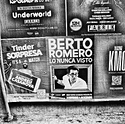Like Suzanne, I think the most compelling photo essays often relate to a subject for which the photographer has considerable passion, and often represent months, or perhaps even years of reasonably-dedicated work.
That said, I also think there is a very wide range of scope befitting the category. By that, I mean a photo essay can range from a few images to dozens, and still fit within the general category. The choice depends both on the subject matter and how deeply the photographer wishes to explore it, while maintaining the interest of the "reader".
The approach to creating the photo essay can also vary. One might, for example, begin documenting a subject that seems interesting, but about which the photographer is only marginally familiar. As the work progresses, a viewpoint might start to emerge, which may, in turn, require some back-tracking or re-shooting. Periodic editorial reviews of the images may also shift the viewpoint.
In contrast, the photo essay may start as being about a subject with which the photographer is intimately familiar. He or she might plan the whole sequence of images in advance, based on that thorough pre-knowledge, and then proceed to efficiently fill in the blanks in the story board. Like writing a text essay or story, outlining may help in the pre-planning, and may suggest moving parts of the story around for improved flow.
Either way, I think each image, or at least most of the images, need to be able to stand on their own, and tell a small story that is obvious and compelling. If some part of the story needs less-compelling "context" images to provide the glue for the story, the approach may need adjustment. Then, each of the selected images also needs to fit cohesively into the larger story, and be a key part of that larger tale - a part without which the larger story would suffer. In most cases, that probably requires lots of images from which to start, combined with a lot of tough editing.
Although I've done several series of images about different places I've found to be of historical or cultural interest to me, I haven't really approached the subjects with a photo essay in mind. Thus, I don't have anything finished that I'd call a photo essay. Similarly, I'd say that some "collections" of work that have a related topic, and have been published under a general theme, usually fall short of being a real "photo essay" as they lack the finely-honed viewpoint and/or the tightly edited story line.









